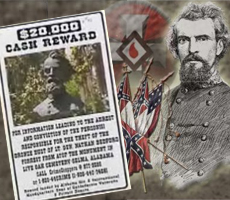 Moving towards the November elections, we see a country that is increasingly becoming divided over issues long thought to have been resolved. Women’s rights to meaningful reproductive health care are at risk as are their rights to equal pay an opportunity in the work place.
Moving towards the November elections, we see a country that is increasingly becoming divided over issues long thought to have been resolved. Women’s rights to meaningful reproductive health care are at risk as are their rights to equal pay an opportunity in the work place.
Minories, the elderly and the poor are increasingly finding themselves being disenfranchised with ever increasing efforts to restrict their voting rights in key battleground states such as Ohio, Pennsylvania and Florida.
Citizens are now arming themselves with legally concealed weapons reinforced by “Castle Doctrine” and “Stand Your Ground” statutes in more than half the states. Guns are increasingly becoming the principle negotiating tool for “conflict resolution”.
William Faulkner once wrote “The past is never dead. It’s not even past.” And this statement rings true today in America in general, and in the deep south in particular. There are constant battles over history now ranging from whether it is included in textbooks in Texas to Michele Bachmann’s whitewashing of the Founding Fathers’ views on slavery.
In the south there are never ending battles over the Civil War, the Ku Klux Klan and their associated symbols. All this begs the questions: who gets to define history? Who gets to tell the story? What tales are revered? Which ones ignored?
With all this going on, it is not surprising that a long-deceased Civil War general and first “Grand Wizard” of the KKK, General Nathan Bedford Forrest, is once again stirring up controversy. You might remember his best as Tom Hanks’ namesake in the movie Forrest Gump.
In the 1994 motion picture by that name, Tom Hanks’ character states that he received his name from his ancestor General Nathan Bedford Forrest, believing in his naivete that the KKK was a “club” where members rode around on horses “dressed up as ghosts”. He went on to explain that he received that name as a reminder that people are prone to doing things that “just don’t make no sense”.
The real Nathan Bedford Forrest was a lieutenant general in the Confederate Army who went on to become one of the earliest members of the newly formed Ku Klux Klan, serving as its first “Grand Wizard”.
A former slave trader, Forrest enlisted as a private and was promoted to general and division commander by the end of the war. In 1864 he led the attack on the Union at the Battle of Fort Pillow on the Mississippi River in Henning, Tennessee and was accused of war crimes for allowing forces under his command to slaughter hundreds of black Union Army soldiers. A soldier with the 20th Tennessee cavalry, Achilles Clark, wrote to his sister immediately after the battle:
“The slaughter was awful. Words cannot describe the scene. The poor, deluded, negroes would run up to our men, fall upon their knees, and with uplifted hands scream for mercy but they were ordered to their feet and then shot down. I, with several others, tried to stop the butchery, and at one time had partially succeeded, but General Forrest ordered them shot down like dogs and the carnage continued. Finally our men became sick of blood and the firing ceased.” SOURCE
Fast forward to this week in Selma, Alabama, where Gen. Forrest is once again the centerpiece of controversy – this time over the renovation of a monument honoring him there that was successfully removed from public property 11 years ago after pressure mounted from public protests. The renovation includes replacing a bust of Gen. Forrest that was taken back in March along with erecting a larger pedestal and placing it inside a fence to make it more difficult to steal in the future. The project is being headed by the United Daughters of the Confederacy and a group known as Friends of Forrest.
Mark Pitcavage, an expert in right-wing extremism at the Anti-Defamation League, told NBC News that although Forrest was known as one of the Confederacy’s better generals he was also well-known as an “extreme racist”. Speaking of the massacre at Fort Pillow, Pitcavage stated that “No one has ever proven conclusively that Forrest himself ordered it, but at the very least this was the sort of thing he was letting his men do”. SOURCE
Sen. Hank Sanders, D-Selma, told WSFA notes that “Here’s a man who killed African-Americans who had surrendered, who were not a threat to anybody. And yet we are talking about a monument to him”. SOURCE
You can view a short video about the controversy below.
Visit NBCNews.com for breaking news, world news, and news about the economy

You must be logged in to post a comment Login